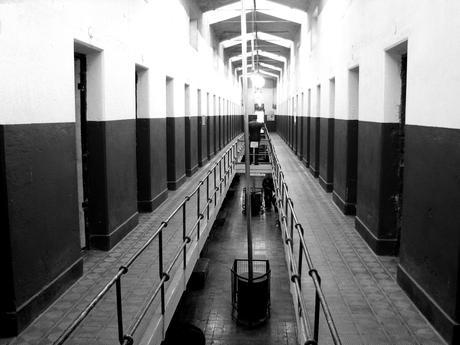
The U.S. has the highest rate of incarceration in the industrialized world.
In 1971, President Nixon infamously declared a “War on Drugs.” This catalyzed an aggressive spike in incarceration rates, which increased the U.S. prison population by over 500% in just a few decades. The United States now has a staggering prison population that is six times larger than most other Western countries, making it the nation the highest rate of incarceration in the industrialized world. Not all American communities experience the effects of mass incarceration equally, however, and the unique way women experience mass-incarceration is particularly under-discussed.
Many studies of post-Nixon era mass incarceration have particularly focused on the ways men of color are effected by mass incarceration. In fact, an entire book, The New Jim Crow: Mass Incarceration in the Age of Colorblindness by Michelle Alexander, examines this troubling reality and argues that the current, disproportionate imprisonment of this population is an extension of racist policies perpetuated in the Jim Crow South. For example, men of color are 94% of those imprisoned for a drug offense and this population is also disproportionately profiled by police.
Given that men make up 93% of the prison population, the comparative lack of focus on women in this dialog makes sense from a purely representative standpoint. But many scholars and advocates have begun to argue that women’s rehabilitation should be a prioritized area of study rather than one that’s ignored. While women are a minority in the criminal justice system, they’re also the fastest growing population in it.
That women make up only about 7% of the total incarcerated population in the United States is precisely why we should focus on how they are treated, according to Emily Salisbury, a professor at Portland State University’s Criminal Justice Program. Salisbury, who made the case for studying female inmates rehabilitation in a compelling TedX event, argued that the crimes women commit are, on the whole, not nearly as dangerous as men’s and that women are more likely to commit crimes related to money or addiction than violence. Data compiled about the one million women currently under the supervision of the U.S. criminal justice system by The Sentencing Project backs Salisbury’s point up: It shows that, compared to men, women are more frequently incarcerated for nonviolent drug or property offenses than they are for violent ones.
Other activists have also tried to bring attention to this reality and argue for women’s rehabilitation in the correctional system. Earlier this year, Piper Kerman, whose memoir Orange is the New Black was recently adapted into a critically acclaimed Netflix original series, addressed problems with the Federal Bureau of Prisons. Kerman argued that the U.S. has a “unique and regrettable reliance on incarceration to inappropriately and ineffectively address social problems like substance abuse, mental illness, and poverty.” Kerman urged the committee to consider the importance of keeping convicted women close to their families, introducing them to meaningful job opportunities and training, and providing them access to mental healthcare — steps she believes would lead to lower rates of recidivism and benefit entire communities.
Many programs that do just that have already achieved success in the United States at the state level. Six years ago, the Cincinnati Police partnered with academics to reduce recidivism by offering known felons access to education and employment. Other initiatives, such as Justice Home New York, allow women to remain in their homes with their children after pleading guilty while a case manager ensures that they are given educational training, job supervision, and treatment for mental illness. These programs help keep women out of the system, and therefore prevent cyclical incarceration from affecting entire families, and benefit the state in that they cost 90% less than the it costs to keep women behind bars.
Adjusting the rehabilitation of women in the penal system will put women on a road to recovery that has the potential to end the cyclical impact the criminal justice system has on families and communities. The factors that frequently land women behind bars are significant and entrenched, but it’s clear that rehabilitation rather than incarceration may the better way to begin to address them.

